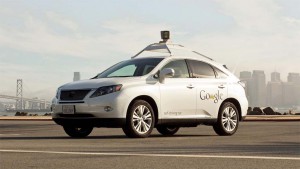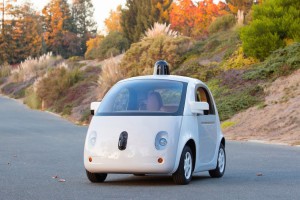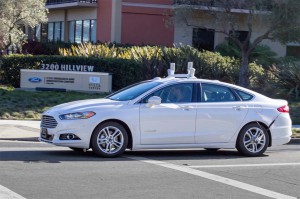There have been more than a dozen crashes involving Google’s autonomous vehicles since testing began on public roads in 2014, but for the first time, a collision has been blamed directly on one of the self-driving vehicles and it could prove a setback for the technology many had hoped would soon revolutionize the automotive world.
An investigation is still underway involving the February 14th incident, though Google has posted a blog note saying “We clearly bear some responsibility.” It occurred when a stopped autonomous prototype attempted to nudge into traffic striking a public transit bus moving at about 15 mph on a road near Google headquarters in Mountain View, California.
Ironically, the crash may have been at least partly the result of efforts to make Google’s autonomous vehicles think more like human drivers. A number of earlier crashes were blamed on drivers trying to do things like race through a yellow light while Google car prototypes strictly obeyed the law, jamming on the brakes the moment the lights turned yellow.
The latest crash has occurred at an awkward time for Google and other proponents of autonomous vehicle technology. California regulators have released draft rules that would bar vehicles that did not specifically have a human back-up driver ready and able to take control in the event of a problem. Google had been hoping to soon begin testing some prototypes that had no traditional driver controls, including pedals and a steering wheel.
Meanwhile, a new study by AAA released this month finds three of four American motorists saying they wouldn’t feel safe being driven in an autonomous vehicle, the vast majority contending their own driving skills are better than self-driving technology.
(Click Here for more on the new AAA study.)
Google and other proponents clearly disagree. Mark Rosekind, the head of the National Highway Traffic Safety Administration, noted during a January visit to Detroit that over 90% of fatal crashes are the result of human error.
But experts acknowledge that autonomous and traditional vehicles would have to share roads for decades to come and that will require programming the technology to better understand how humans react in specific situations. For one thing, it might mean dashing through some yellow lights, rather than always coming to an immediate stop.
(Nissan disables remote app for Leaf EV due to risk of hacking. Click Here for the story.)
In the latest crash, the Google car actually had been programmed to be more human-like. To correct past problems, it attempted to move off towards the road’s shoulder when preparing to make a right turn. But obstacles in its way brought the autonomous prototype to a stop. It then attempted to merge back into the main traffic flow.
According to a statement by Google in its monthly report on its autonomous program, “Our car had detected the approaching bus, but predicted that it would yield to us because we were ahead of it. Our test driver, who had been watching the bus in the mirror, also expected the bus to slow or stop. Unfortunately, all these assumptions led us to the same spot in the lane at the same time.”
The damage appears to have been minor and no injuries were reported. The bus company is making its own investigation, but Google has, for the first time, taken at least some blame.
The incident, if anything, is expected to lead Google to speed up efforts to anticipate and react to the way humans drive. “It’s vital for us to develop advanced skills that respect not just the letter of the traffic code but the spirit of the road,” the monthly report noted.
John Krafcik, director of Google’s autonomous vehicle program, recently said the company wants to expand beyond Silicon Valley and near its offices in Austin, Texas to get broader experience in diverse weather conditions. And Google is just one of many pioneers in the field of autonomous research now field testing the technology. Ford, for example, began running a modified Fusion sedan out of its own Silicon Valley research center in January.
The recent Google incident could pose problems, however, potentially drawing more scrutiny and closer oversight even as autonomous vehicle prototypes become more common on U.S. roads.
(American drivers admit to routinely risky behavior behind the wheel. Click Here for that story.)




Disagree, it just means the code needs to change to eliminate assumptions or predictions of another vehicle (driver) behavior until the cars are connected.
The bigger concern is their ability at night and inclement weather conditions.